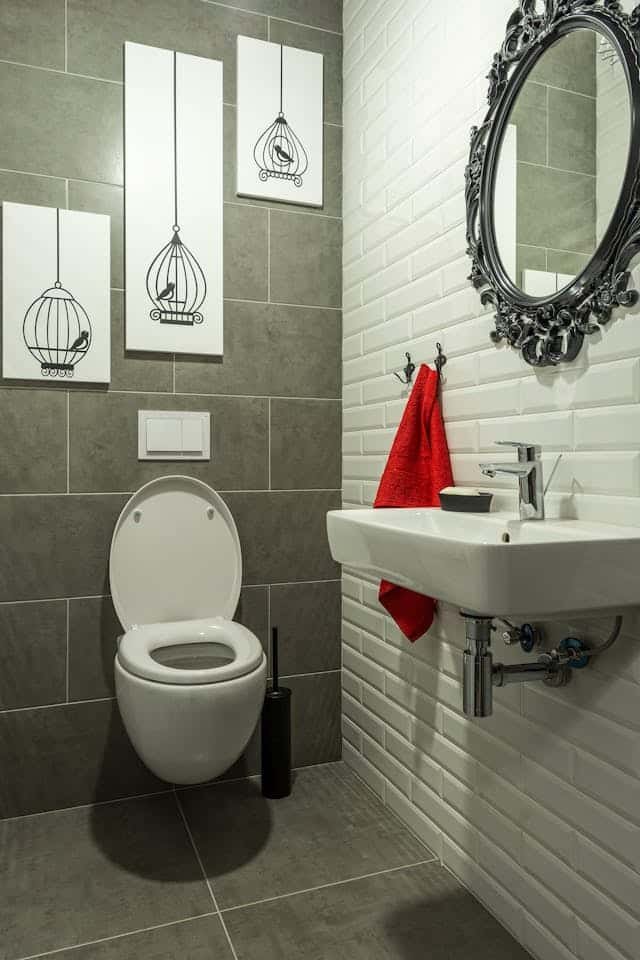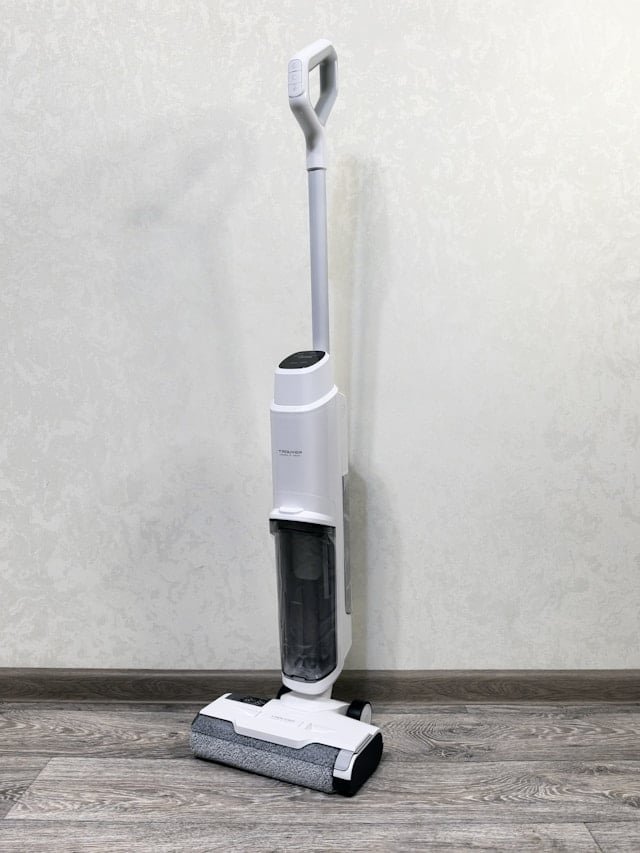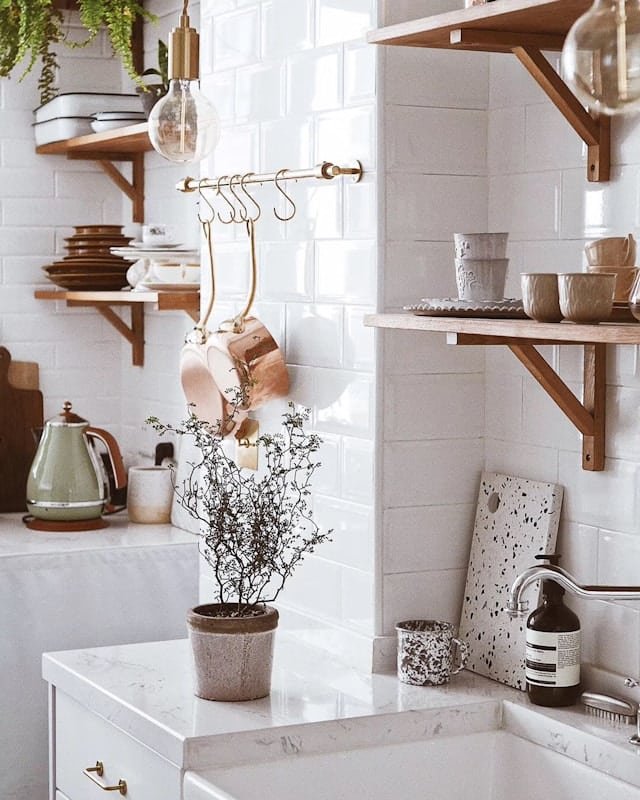How to Clean a Toilet Brush (So It Doesn’t Spread Germs!)

A toilet brush is one of those common cleaning tools that sits quietly in the bathroom, often going unnoticed.
We grab it when the toilet needs scrubbing, then put it right back in its holder without a second thought.
Over time, however, that brush can start collecting germs, bacteria, and mold, rendering it something you definitely don’t want to reuse without a proper clean.
With just a few simple steps, toilet brush cleaning can help you maintain a fresh, odor-free, and hygienic bathroom.
This post may contain affiliate links!
Here’s a step-by-step guide to make sure your brush is truly clean and not quietly spreading germs around.
Why Cleaning Your Toilet Brush Matters
Every time you scrub the toilet, your brush collects bacteria and organic matter.
If left uncleaned, these microbes multiply and can spread back into your toilet (and even the air) during the next use.
Regular cleaning helps:
- Prevent odors
- Kill harmful germs
- Extend the life of your brush
- Keep your bathroom more hygienic overall

Steps for Toilet Brush Cleaning
1. Wear Protective Gloves
Rubber cleaning gloves protect your hands from germs, bacteria, and harsh cleaning chemicals.
Wearing them gives you confidence when handling the toilet brush and its holder, knowing your skin stays safe.
Always make it a habit to put on gloves before starting any toilet cleaning task.
2. Rinse Off Loose Debris
After scrubbing the toilet, flush and rinse the toilet brush in clean water to remove any residue or leftover debris.
This step helps prevent excess dirt from mixing into your cleaning solution, keeping it more effective.
Ensure the brush bristles are thoroughly rinsed before proceeding to the next cleaning step.
3. Prepare a Cleaning Solution
You can choose between two effective cleaning methods to keep your toilet brush germ-free.
For the bleach method, fill a bucket or the toilet bowl with hot water and add 1 cup of bleach for deep disinfection.
For the natural method, mix 1 cup of white vinegar with 1 tablespoon of baking soda in hot water for a gentle yet effective cleaning solution.
4. Soak the Brush
Place the toilet brush head-down in the cleaning solution and let it soak for 30–60 minutes to ensure a thorough clean.
This process kills bacteria and germs and helps remove stubborn stains from the bristles.
Allowing the brush to fully soak ensures it is sanitized and ready for the next step in your cleaning routine.
5. Clean the Holder
Start by emptying any water from the toilet brush holder to remove leftover debris and bacteria.
Then, spray it with disinfectant or soak it in your cleaning solution to ensure it is fully sanitized.
Finally, rinse thoroughly and let the holder air dry completely before placing the brush back, preventing germ buildup and mold growth.
6. Rinse Thoroughly
Hold the toilet brush under hot running water to remove any cleaning solution, germs, and loosened grime.
Make sure all the bristles are completely rinsed to prevent leftover chemicals or bacteria from remaining.
A thorough rinse ensures your brush is clean, safe to use, and ready for the next step in your cleaning routine.
7. Dry the Brush Completely
Let the toilet brush drip-dry by resting the handle under the closed toilet seat or hang it somehwere, allowing the bristles to hang over the bowl.
This method ensures water drips away instead of collecting in the holder, which can lead to bacteria and mold growth.
Make sure the brush is completely dry before storing it to keep it sanitary and ready for the next use.
8. Repeat Regularly
Deep clean the toilet brush at least once a week to maintain a fresh and hygienic bathroom.
After cleaning a heavily soiled toilet, it’s important to clean the brush immediately to prevent germs and bacteria from multiplying.
Regular maintenance keeps your brush and holder safe, odor-free, and effective for long-term use.
Extra Tips for a Germ-Free Toilet Brush
- Replace the brush every 6 months or sooner if the bristles become frayed, discolored, or stained. This ensures your cleaning tool remains effective and doesn’t harbor bacteria.
- Use a ventilated holder to store the toilet brush, allowing airflow to prevent mold and bacterial growth. Avoid storing it in a closed, damp container, which can quickly become a breeding ground for germs.
- Keep the brush away from toothbrushes, personal care items, and other cleaning tools to avoid cross-contamination.
- Store a small spray bottle of disinfectant in the bathroom for quick brush touch-ups between deep cleans, especially after heavy use.
- Rinse the brush after each use with hot water to remove leftover residue and minimize odor buildup.
- Label a dedicated cleaning routine in your household, making it easier for all family members to know when to sanitize the brush and holder, keeping your bathroom consistently hygienic.
Bottom Line
Toilet brush cleaning doesn’t take much time, but it makes a huge difference in keeping your bathroom fresh, hygienic, and healthy.
By following a simple weekly routine and using the right storage methods, you can prevent bacteria, mold, and odors from building up on your brush.
Maintaining a clean brush not only keeps your toilet sparkling but also ensures that every scrub is safe and effective for your family.
Read more:
- 20 Surprisingly Easy Bathroom Cleaning Hacks That Leave No Dirt Behind
- 20+ Practical Kitchen Cleaning Hacks That Go Way Beyond the Basics
- How To Organize Your Room And Always Keep It That Way
- 15 Shockingly Simple Habits Of People Who Keep Their House Clean All The Time
- 25+ Effective Cleaning Hacks You Won’t See All Over the Internet





